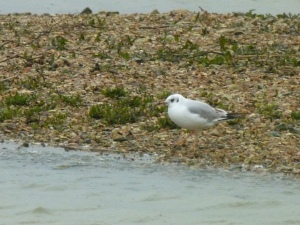Nature is full of drama
What a week of drama! So much wildlife has been seen and there have been stories worthy of a TV soap opera! And oh yes, there was that general election thing as well. I’ve written about that too.
In terms of the caterpillars, they are all still alive and munching their way through large quantities of leaves. I did get quite worried about the Garden Tiger Moth caterpillars at one point as they were not moving much, or eating much. And then I found what looked like half a caterpillar! But I still had three … turns out it was the skin of one! Evidently they outgrow them and shed them. It wasn’t long before the other two went through this as well. Just after they shed it, their hairdos look particularly fresh! They are called Fluffy 1, 2 and 3, whilst the green caterpillar has been nicknamed Jade (as suggested by Jennifer Hunt).
At Lorton, we have had a couple of school groups in looking for minibeasts – pond dipping, using sweep nets in the meadow and searching under logs in the wood. An interesting beetle, caught by a little girl, caught my eye and I took it back to the centre. My line manager identified it as one of the soldier beetles, and with a bit of further investigation I do believe it is Cantharis fusca which is Nationally Scarce species. [ID was confirmed by NHM Coleoptera, I said previously that it was a Red Data Book species, but it was downgraded in 2013]. In the woods, one group found a caterpillar, so I promptly potted it up (with some leaves of course). This one is called Fusspot as he/she seems quite fussy about food.
We had a bit of a work jolly on Thursday. As part of being a volunteer at the Chesil / Lorton centres, training is provided. In this case, training took the form of a trip over to Durlston Country Park and National Nature Reserve where we had a lovely wander in the sunshine (surprisingly pleasant weather considering the wind we’d had the rest of the week!). We found yet another caterpillar – now potted up and named (Arnold – suggested by Chris Calow), as well as plenty of flowers and even my first Wall butterfly of the year!
After our wander, we were given a guided walk by one of the rangers, during which we saw some more fantastic wildlife!
Back at Lorton for the weekend, and I was anxious during Sunday morning – the eggs had been unattended all morning, with just the quickest visit from the male Kestrel. Later on, he sat on them for a good long time, though as I type at 8pm, he is absent again from the webcam. My fears were confirmed when someone found some wings and feathers in the meadow near where their box is … Kestrel wings, and according to Sean Foote, they look to belong to a female!
To cheer myself up after this tragedy, I spent an hour or so sitting by the pond after work (busman’s holiday!) looking at the insects and listening to the birds. As you can see, it is a lovely spot to relax at. I watched a damselfly nymph crawl across a lilypad, attempt to climb a vertical leaf a couple of times, before it fell into the water. I saw a bright red beetle lurking in the shade of a post, and a spider waiting for its next prey item to appear. A fellow naturalist appeared and we discussed wildlife, before he spotted a damselfly on a nearby bush – my first of the year! Just after, I spotted a dragonfly exhuvia attached to a plant near the pond – a different shape to the one I found last week, thus a different species presumably!





























































































































